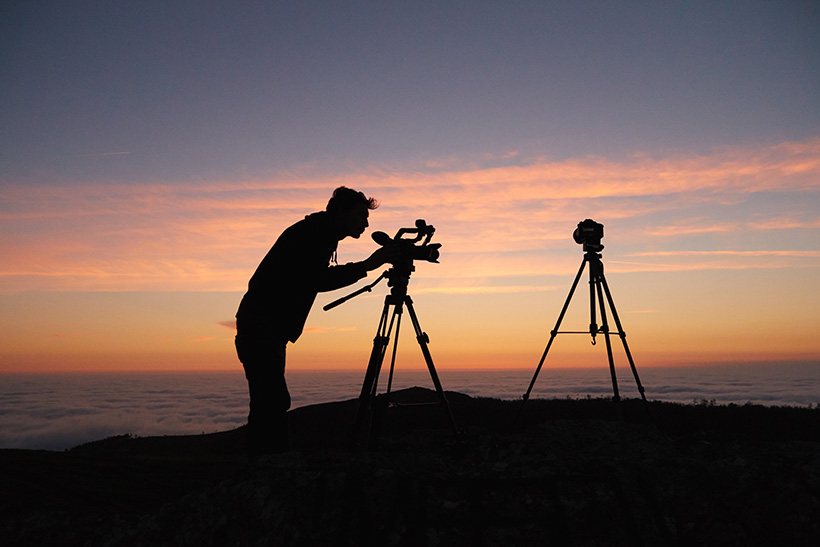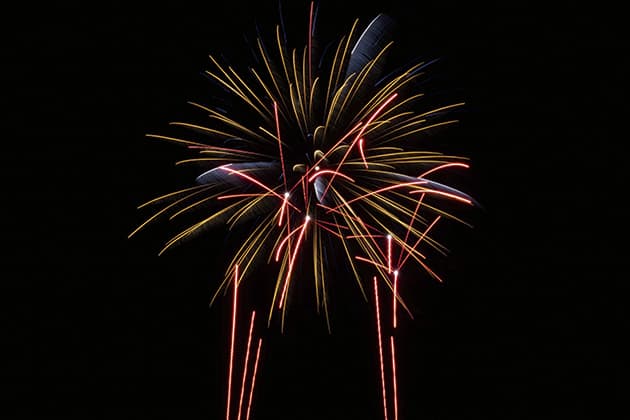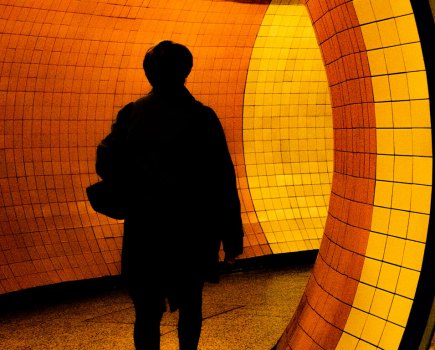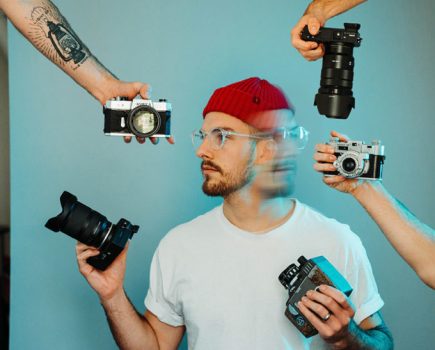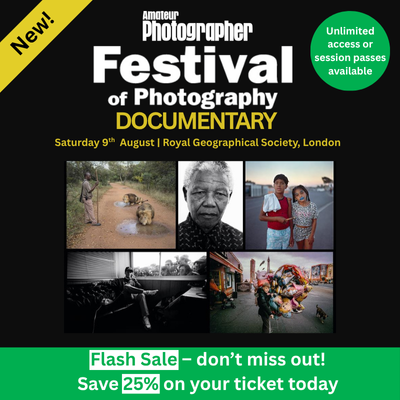Night photography opens up a whole new world of colour, drama and spectacle and is a lot easier than you might think. While taking photos at night brings some challenges, our guide will help you to take amazing photographs, regardless of your kit. Read on and learn how to feel your way in the dark!
We cover how to master night photography: from night landscapes and city scenes, to the Milky Way, stars, and solar and lunar eclipses.
Night photography: Preparing to photograph at night
Whatever camera you’re shooting with, whether a DSLR, mirrorless camera, compact camera, or a smartphone, we outline what you need to know when photographing the night sky.
Checklist: What camera equipment do I need for night photography?
Cameras vs Smartphones: Smartphones like the Samsung Galaxy S23 Ultra, the iPhone 15 Pro Max, and the Google Pixel 8 Pro have made enormous strides when it comes to camera technology, with dedicated night modes. However, a DSLR or a mirrorless camera is more capable when it comes to night photography thanks to having a larger sensor, a bigger range of lens choices, plus more advanced controls.
Do not be discouraged if you don’t own a camera or one of the latest smartphones. A larger camera is the ideal, but there are ways to optimise your photos at night and darker conditions with a smartphone. We cover these here in due course.
- Lenses: The word ‘photography’ literally means to “draw with light”. So, what do you do when there is so little of it? Let it all in! This means using the fastest, widest lens possible, with a large aperture, and a wide-angle view to capture the whole scene. You’ll find our recommendations for the best lenses for astrophotography. Alternatively, with a tripod and a little patience, you can use long exposures to capture a cityscape with a regular kit lens.
- Tripods: Whether shooting with a camera or a phone, keeping the camera stable is key. In addition, a tripod coupled with a remote shutter-release cable (or remote release app) is a helpful addition when shooting long exposures. This will reduce the risk of any camera shake or vibration. Find the best tripods available.
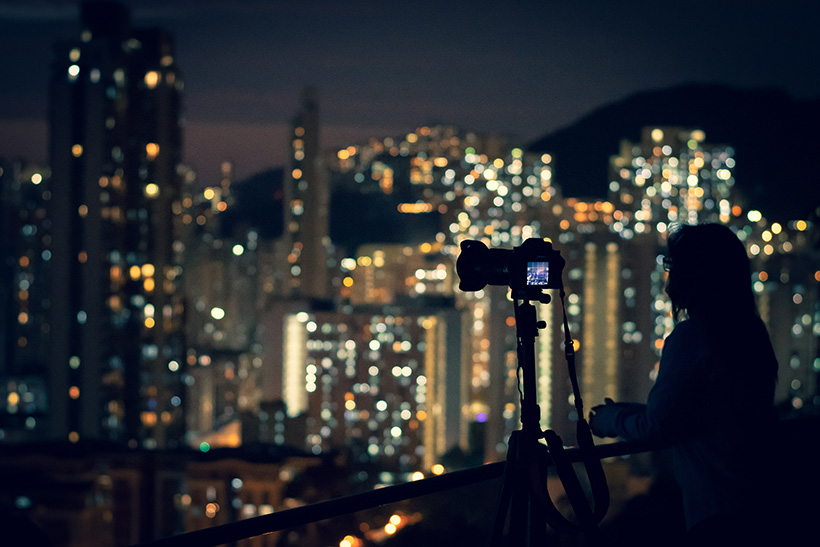
- A flashlight: Only a photography ninja can comfortably set up their camera in the dark. For the rest of us a torch (flashlight to US readers), or red-light head-torch, will come in handy.
- Spare batteries (or charger): It’s always good practice to take a few spare batteries with you, particularly if using a camera and shooting long exposures (as is likely when shooting the night sky), as this will drain your battery life. If it is cold out, remember to keep them in your pocket as exposure to the cold will drain them quicker. If using a smartphone be sure to bring a charger.
- Spare memory cards: Photographing at night and in low-light takes planning and, like any other type of photography, some flexibility too. Shooting in raw allows for this flexibility. The downside is raw files take up more space than JPEGs and if you’re looking to shoot both raw and JPEG, extra space is going to be a welcome addition.
- Fingerless gloves: You’ll be outdoors a lot, and stationary for spells. When it’s cold, a pair of gloves is a must.
- Timer: A shutter release cable will help minimise any potential camera shake. For those without this, or when shooting on a smartphone, you can use the in-built self timer instead. The short delay will give time for any movement from pressing the shutter release to die down. For those who use a camera with Wi-Fi or Bluetooth, see if you can use your smartphone as a remote release, as a lot of them come with the option to connect your camera to your phone and use the remote control function.
How to choose the best camera and lenses for night photography
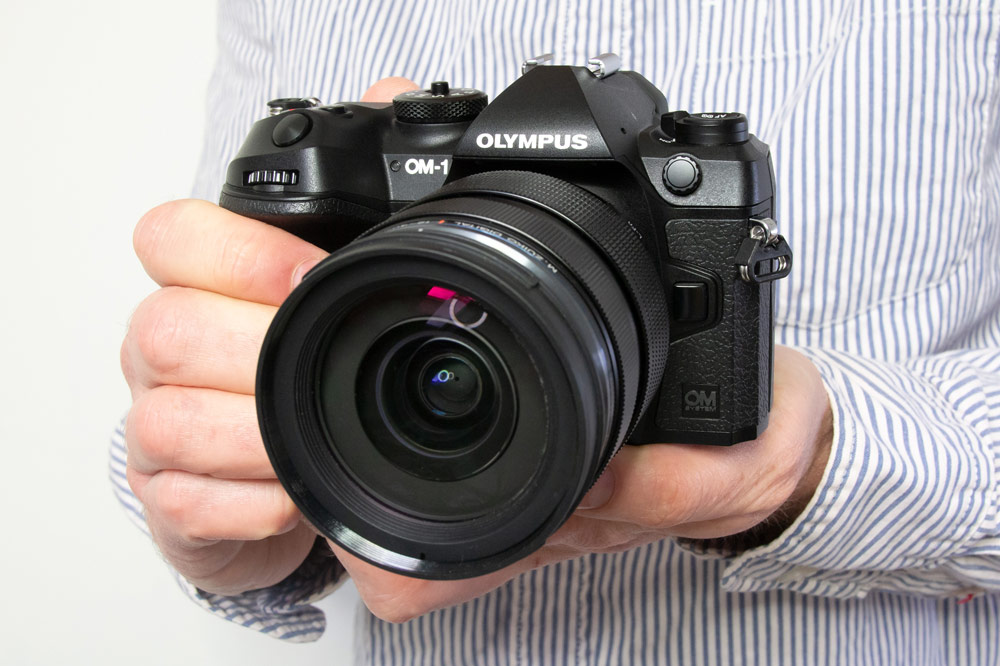
- A full-frame camera, will generally perform better in low light than APS-C and Micro Four Thirds cameras. However, some models include features that are specifically designed for night photography, such as the Olympus OM-1.
- If you’re looking to photograph the moon and stars, it is worth noting that many professional astrophotographers prefer manual focus with live magnification over autofocus. Some cameras come with Starry Sky AF, such as the Olympus OM-1 and OM-5, which makes focusing on those white stars in the sky easier. Read more on the best cameras for astrophotography.
- A fast aperture, wide-angle lens is the way to go in order to maximise image brightness plus shoot at a relatively high ISO and ideally in RAW format. For additional suggestions, check out our guide to the best lenses for astrophotography.
- Prime (non zoom) lenses almost always have a wider maximum aperture than zoom lenses, which is great not just for astrophotography, but for any city scenes and streets at night. A ‘fast’ lens will also be a great bonus for indoor shots in restaurants and bars or cathedrals or monuments.
- Ideally, your camera will also be weather-sealed and easy to use in the dark.
How to use long exposures at night
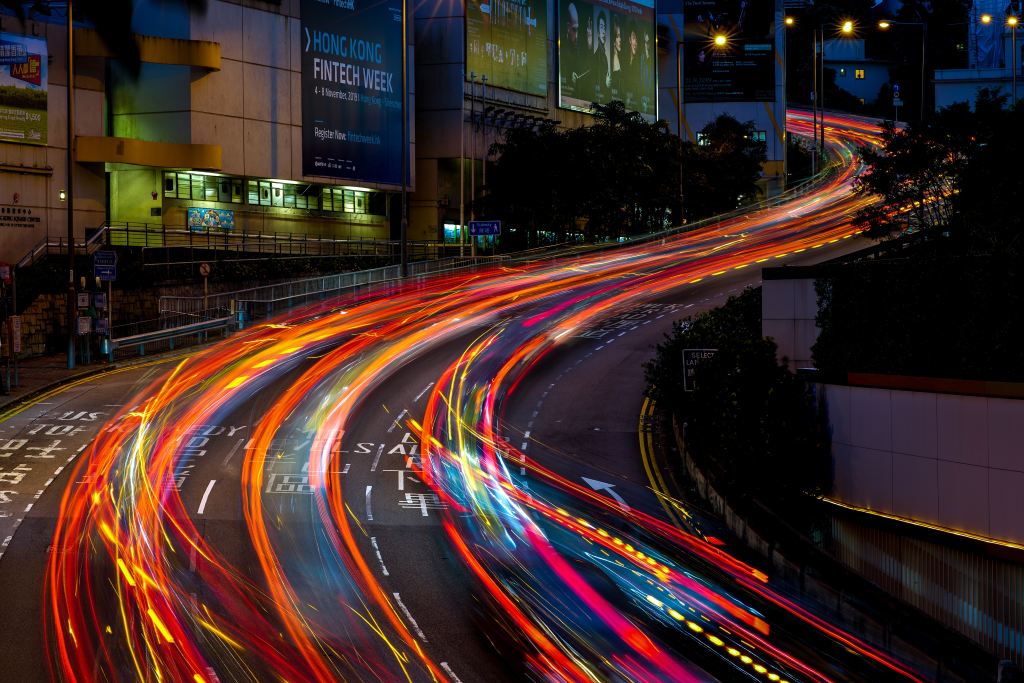
The classic method for night photography is to put the camera on a tripod and use a longer exposure: often for many seconds, and sometimes even minutes. With light so much lower than in the daytime, the camera needs to keep the shutter open and the sensor exposed to the light for much longer. With a tripod, you don’t have to worry about any camera shake or movement during the exposure. This means you can use a low ISO setting for the highest image quality.
Here’s a quick step-by-step guide to long exposure night photography:
- Put the camera or phone on a tripod
- Set the ISO (sensitivity) to the camera’s lowest setting, usually ISO 100 or ISO 200
- Let the camera’s exposure meter work out the exposure as usual, though sometimes you may need to add 1-2EV of exposure compensation to capture the full brightness of neon lights and city streets at night
- Use the camera’s self-timer to start the exposure – this gives time for any movement from you pressing the shutter button to die down
- Wait while the camera completes the exposure!
Sometimes the camera will be ‘busy’ after a long exposure. That’s because long exposures can cause extra sensor noise, so cameras take a ‘dark frame’ straight afterwards so that any noise can be detected and removed. This takes about as long as the original exposure, so don’t worry, your camera has not gone wrong.
Long exposures can produce some very interesting effects. The lights from moving traffic will turn into streaks or ‘rivers of light’, and passers-by will blur or even disappear from the scene entirely. If there is light in the sky, you’ll see clouds blurring into soft streaks too.
Taking photos of cities, buildings and architecture at night is a great way to explore your local area, and add colour to your images, as the night scene will be full of colour from artificial lights, or from traffic and cars in the scene.
Get better night shots of cities
Handheld photography at night
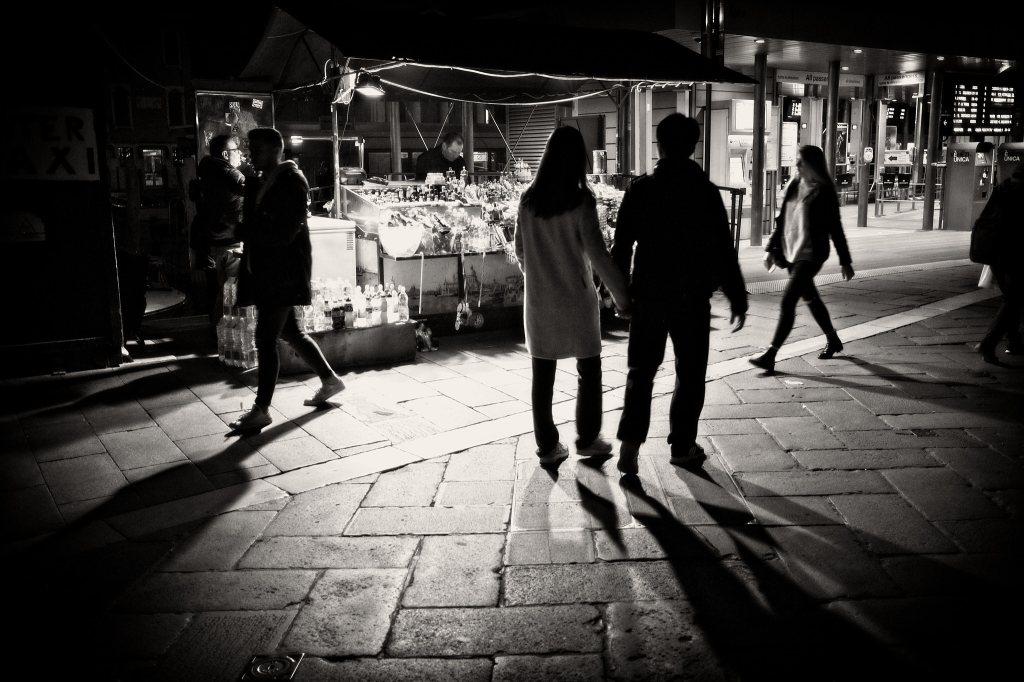
You can’t always use a tripod in a city at night. Sometimes it’s too busy, sometimes there’s no time, and you won’t always have one with you. With modern camera sensors, image stabilization and clever computational technology in many smartphones, it’s possible to capture street scenes at night with the camera handheld.
For this, use the camera’s Auto ISO setting. This will increase the noise levels in your photos, but modern cameras can produce great results even at high ISO settings. Better still, cameras with in-body stabilization (IBIS) may enable you to capture sharp handheld exposures as long as a second. It depends on the camera, and you may need to take a couple of shots to get a good one, but it’s well worth a go.
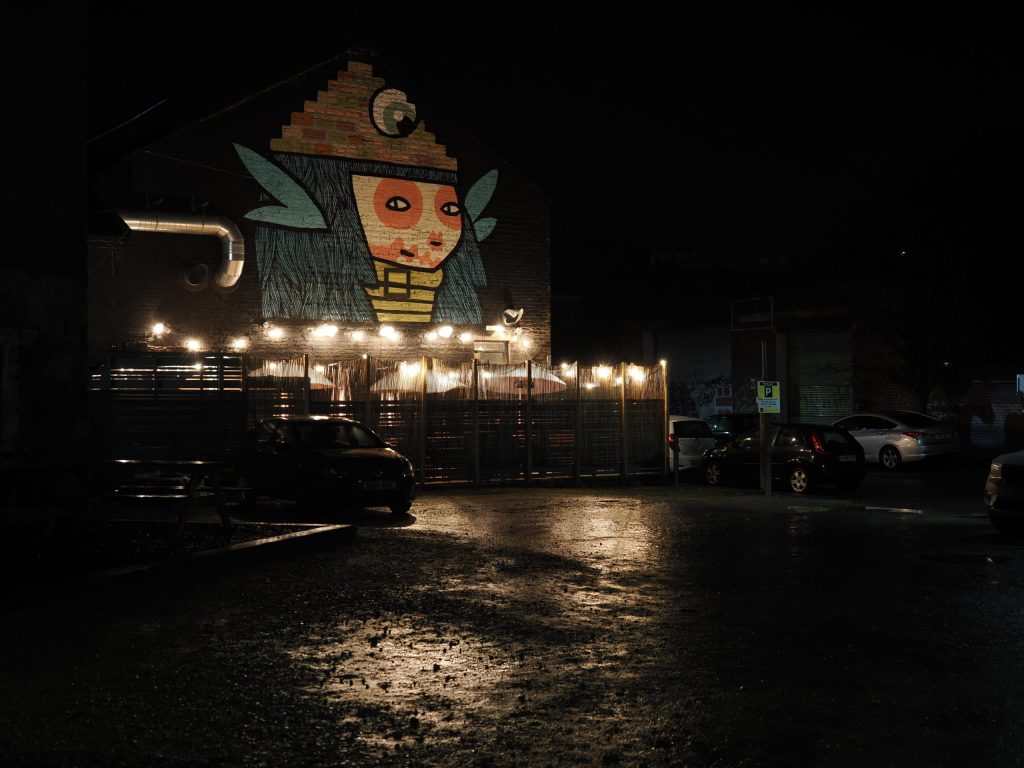
Today’s smartphones often have ‘night’ modes that ‘build’ an image from a series of separate exposures taken in quick succession. On most iPhones, for example, you simply need to keep the camera roughly still for around three seconds. The image quality that results can be quite impressive, letting you shoot in light so dim that you might hesitate to use a proper camera.
We’ve got a guide on how to photograph cities at night, plus a guide on how to take cinematic photos of cities.
How to photograph the night sky
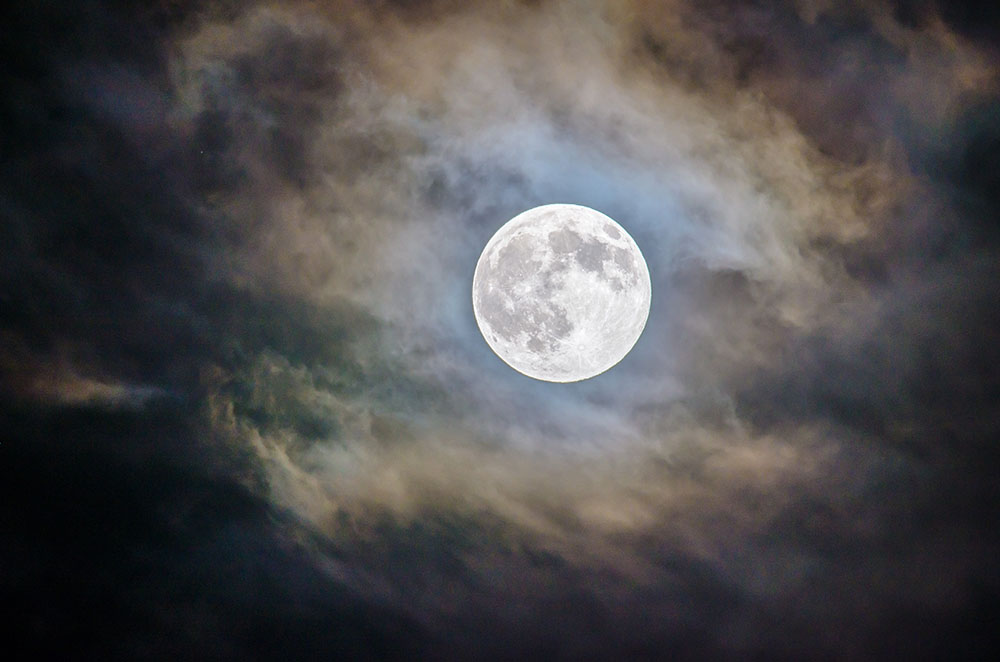
The main things to consider when planning a night shoot
- Finding a good location: Clear skies are critical to clearer shots and checking the weather forecast is a must. Light pollution is to be avoided, particularly from artificial sources like street lights. National Parks are good spots for night sky photography as they are often away from cities and towns. It is also a good idea to avoid a full moon: unless of course you’re photographing the moon. As it is a light source, it will compete with other light sources in the sky like stars or the Milky Way.
- Plan a date for shooting: The moon, stars and the sky stop for no one. This is why to get your optimal shot of say, the full moon, it is essential to know the moon cycle in advance to pencil in a date in your diary for your shoot – weather-permitting when the time comes, as ever.
- Composition: The sky is not the limit. Playing around with letting other interesting objects into your frame is a good way to add some more detail to your image, particularly if shooting on a smartphone that doesn’t pick up all the fine details. You might even want to arrive at your location earlier to think of ways to compose your shots.
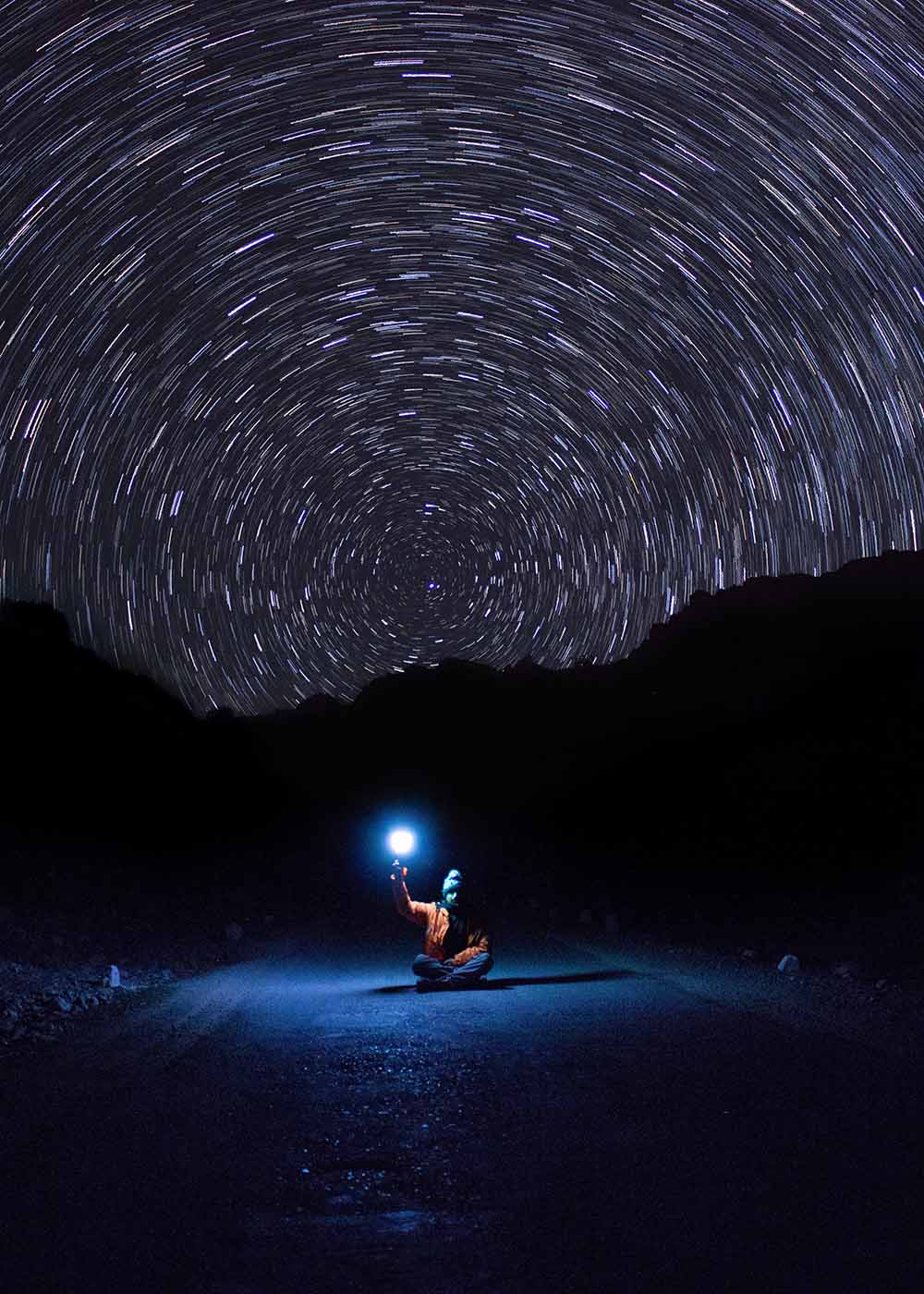
What camera settings should I use for night photography?
- You’ll need to be aware of the holy trinity of settings: Namely ISO, aperture, and shutter speed settings.
- To reduce noise, use the lowest ISO speed possible on your camera, so that any stars don’t get “eaten” or removed with noise. Check what the best “Base ISO” speed is on your camera, as some of the “LOW” or “L” ISO speeds have lower dynamic ranges.
- If you want as much as possible in focus set your aperture to f/10 – f/16 on a full-frame camera, f/8 – f/14 on an APS-C camera, and f/5.6 – f/8 on a Micro Four Thirds camera. However, be aware that this will result in very slow shutter speeds. For those that have a bright, and high-quality lens, you can use it at brighter apertures, such as f/1.4, f/1.8, to f/2.8.
- You will need to experiment with the shutter speed to find out what exposure works best for the scene. The longer the exposure, the more likely you’ll get star trails (as shown above), but to avoid these you’ll need a shorter shutter speed (and may need a higher ISO speed).
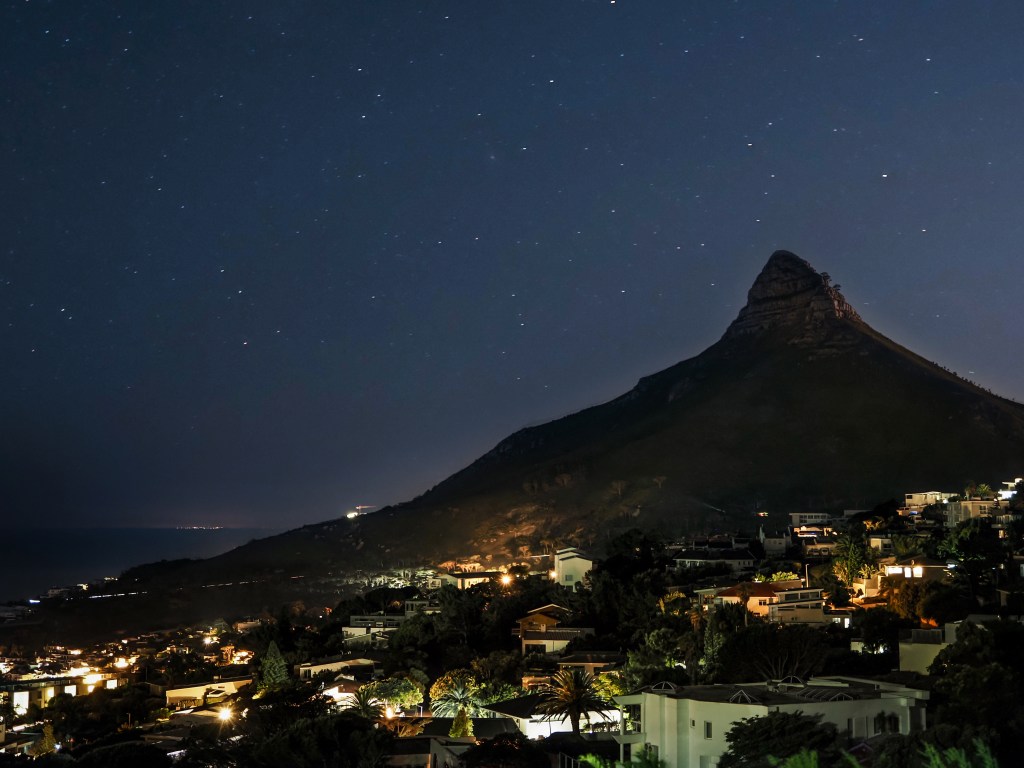
How do I focus on distant stars?
Set your camera to Manual mode, turn off autofocus and set it to infinity. Use the rear screen to check focus using a magnified view (and live view mode when using a DSLR). If you have a modern Olympus/OM System camera, then you can use the Starry Sky AF setting, and this will set the focus point to the right distance for stars.
What happened to the stars in my photo?
If you’re using a camera in JPEG mode, then you may find you lose stars, as noise reduction, when applied too heavily to an image can end up removing stars from the image. For this reason it’s recommended that you shoot raw images, then you have precise control over how much noise reduction is applied to the image.
For Sony cameras, it’s also recommended that you switch to uncompressed raw, to be sure to avoid the issue of the “Sony Star Eater”. However, it can also vary from camera to camera, and with longer exposures becoming an issue (for example, over 4 seconds, or when using Bulb mode). See Mark Shelley’s site for full details.
What settings do I need for night photography with a smartphone?
For smartphones, tap your screen to lock your focus and set the exposure manually if the phone has manual control – often found as the “Pro” or “Expert” mode. Alternatively, look for a dedicated night mode – most newer smartphones feature this. Google Pixel owners will be able to use the Astrophotography mode when the phone is used on a tripod or stable surface, and the phone will automatically use a longer exposure when it detects a solid support. For more tips on how to use manual focus, click here. If you need a phone support, have a look at our guide to the best phone tripods.
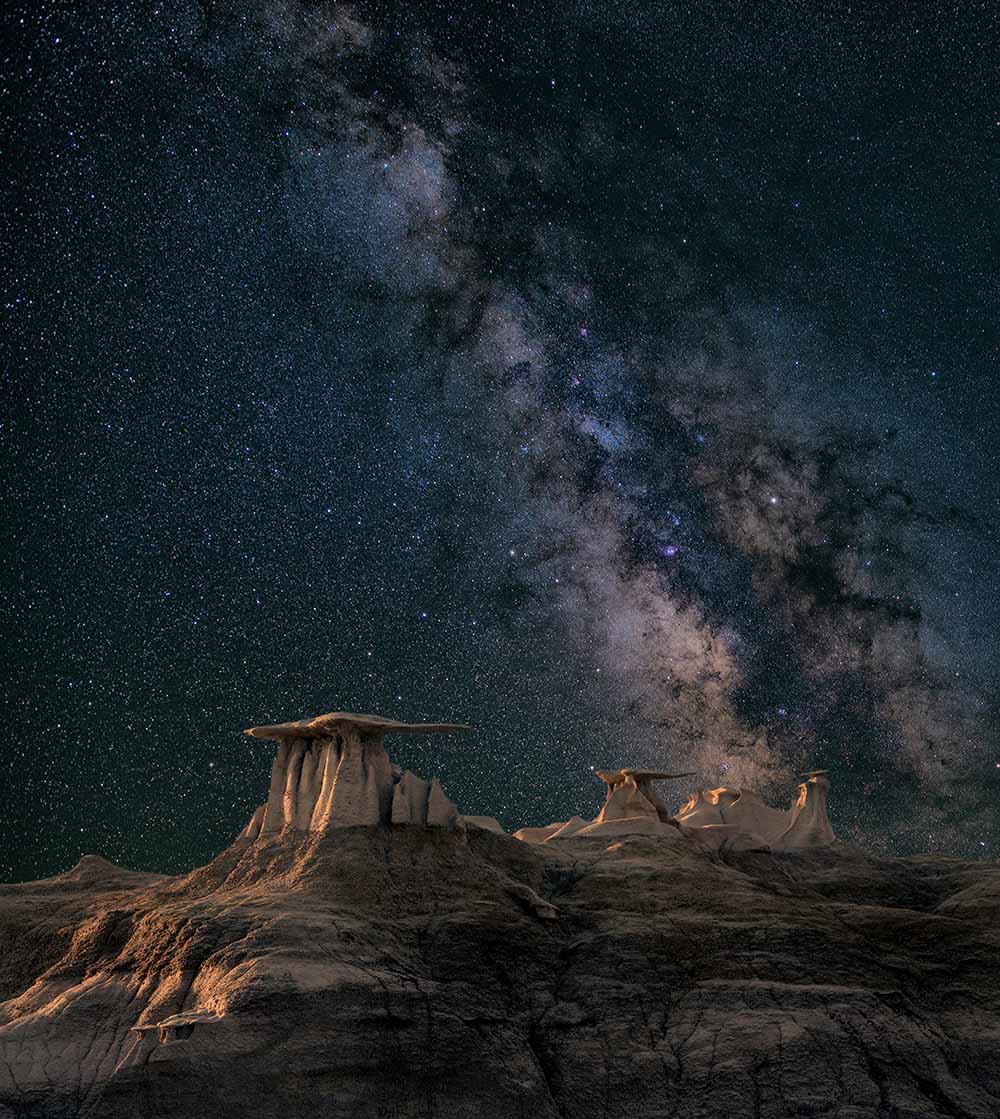
Can you take pictures of the night sky with a smartphone?
Thanks to rapid advancements in smartphones, you can also take photographs at night and low-light with a smartphone. Our tips above also apply to their use.
You’ll normally need to use a phone tripod or steady surface in order to keep the camera still and steady as possible. A word of warning to smartphone photographers: Do not give in to the temptation to zoom excessively. Just because you can doesn’t mean you should. Your photos will not be as clear, as often smartphones will simply use digital zoom in low-light conditions. The main camera often features a larger sensor, meaning better low-light performance.
Check to see if your smartphone has a manual mode or a dedicated Night mode. If you’re using a Google Pixel phone, then using it on a tripod or stable surface will enable the Astrophotography mode.
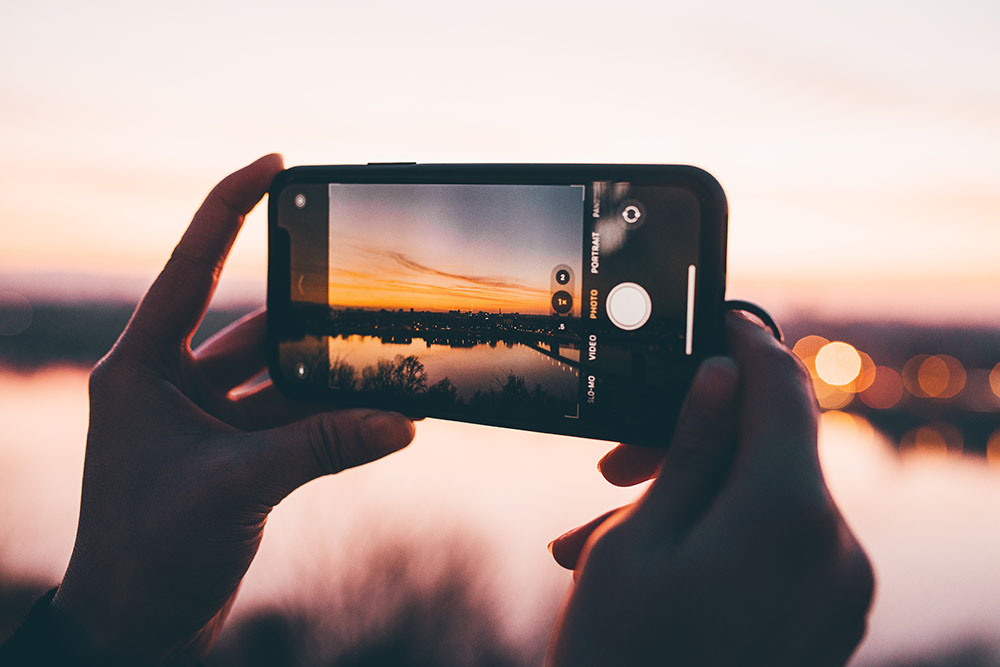
Tips on how to photograph…
If you’re looking for something more specific, say, you really want to photograph the moon or star trails, have a look at our guides below.
How to photograph the Milky Way and other stars
As with the moon, the Milky Way is all about timing. It’s a good idea to do some research on the Milky Way’s pattern. The Sky Guide app is a superb resource for this. It allows you to locate the Milky Way in order to frame a shot. As it’s the Milky Way’s vibrant colours that catch the eye, shooting in raw is essential. This way you can go back and make adjustments to your image, taking control of how much noise reduction is applied to get it just right.
For photographing the stars, first of all look for a dark location: avoid cities as light pollution will conceal otherwise visible stars. The moon acts as a huge light source too, so try to time your shoot for when the nights are darker. Read our guide on how to photograph the stars, for more information and detailed advice.
For a complete guide to shooting the Milky Way and stars, have a look at this article on how to photograph the Milky Way and stars.
How to photograph the Moon
Are you a beginner Astro photographer? Consider starting with the moon. It is considered an excellent starting point because of its brightness.
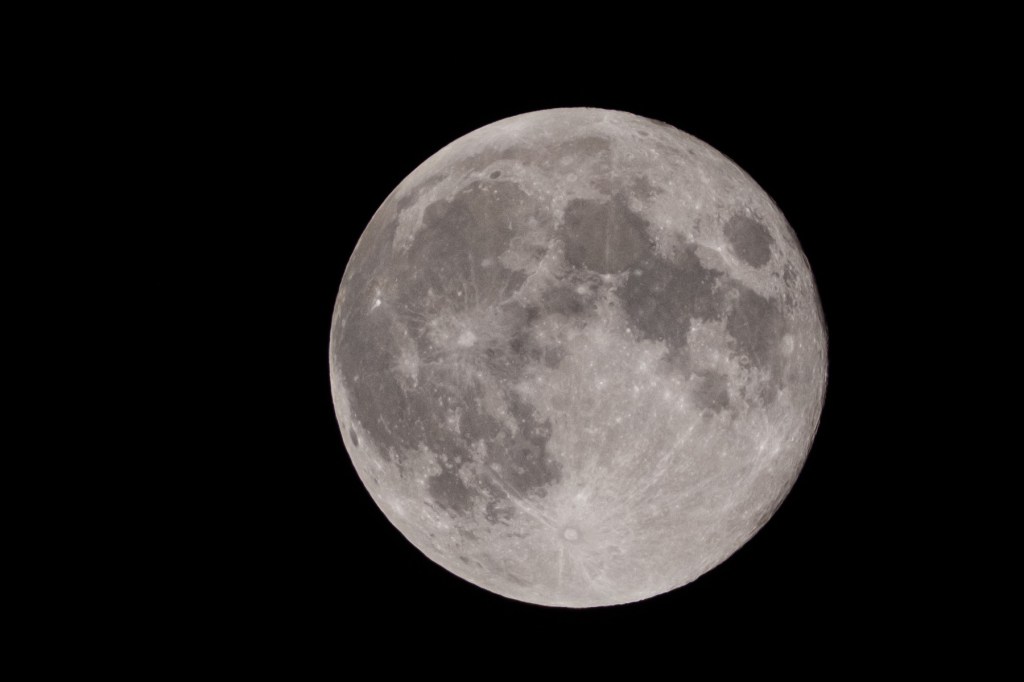
When photographing the moon, the main thing you want to account for is the Earth’s rotation. The moon moves across the sky, and if your shutter speed is too slow, then it will blur as the earth rotates. To learn more, read our guide on how to photograph the moon.
Star Trails
There are a number of ways to photograph star trails. One way is to take a number of photos quickly one after the other and stack them (you’ll need a tripod and stacking software for this one). Another way is to create a time-lapse – using your camera’s time-lapse settings.
The settings that your camera possesses, and the length of exposure you can capture will influence your approach to capturing star trails. Check your slowest shutter speed by having a look at a review of your camera. Those with Live Composite (such as an Olympus / OM System or Panasonic), allow you to watch the exposure on-screen as it happens.
Fireworks
Guy Fawkes night, New Year’s Eve, Chinese New Year, and other special events offer many opportunities for celebratory fireworks shows around the world. When the time comes, check out our essential tips for photographing fireworks.
Landscapes at night
While the night sky can play havoc with your camera settings, it also provides a real opportunity to produce some great (and spooky!) landscape shots. Things to consider are: the weather, location and light pollution. See our guide to night landscape photography.
Don’t be afraid of using high ISO speeds
Particularly with newer cameras, you don’t need to worry as much about using higher ISO speeds. Noise reduction has improved dramatically over the last 5 years, and even with high levels of noise in images, photo editing software (and AI) has given massive improvements in noise processing.
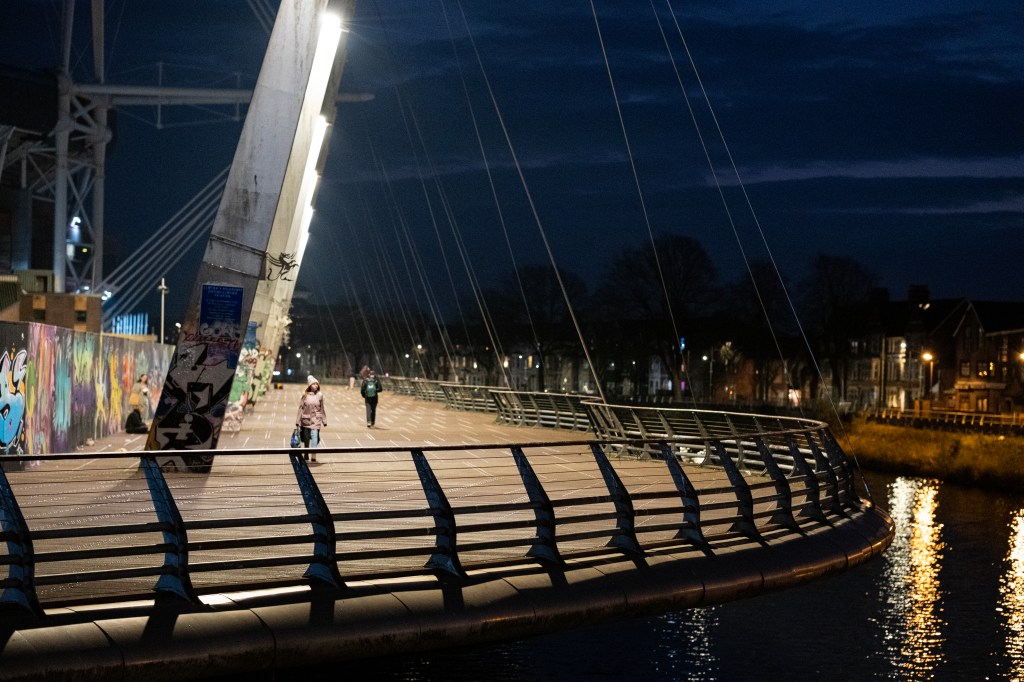
Using a higher ISO speed may be needed in situations where you need to keep the shutter speed as fast as possible. See our guide to shooting images in low light: Don’t be be afraid of high ISO.
Article: Isabella Ruffatti, and AP Staff. Featured image credit: Kobu Agency via Unsplash.
Read more on night photography:
- Art Wolfe on his approach to night photography
- Spooky shots: Guide to night landscape photography
- Liam Wong shares new book of cinematic cities at night
- Samsung ‘fake’ moon photos: Has AI photography gone too far?
Follow AP on Facebook, Twitter, Instagram, YouTube and TikTok.

